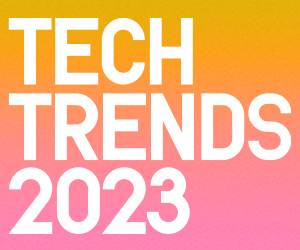In a world of smart machines, students will need human skills, Spencer said. These include curiosity, wisdom, and empathy. Students will also need to be divergent thinkers and curators who can use analog tools. Schools can teach students to use AI to generate new ideas when they feel stuck, to manage projects and to build conceptual knowledge.
As states and school districts grow these pathways and programs for students, the access for understanding AI is essential. Sutton Wunderle, senior product marketing manager at Microsoft Education, presented state leaders with trends and data indicating the extent to which the workforce will need prepared workers who can understand and leverage AI.
According to the data Wunderle presented from Microsoft’s Work Trend Index Annual Report, 82 percent of leaders say employees will need new skills to prepare for AI, and there is a 79 percent increase in job postings mentioning GPT on LinkedIn.
DIVE DEEPER: ISTELive presenters discuss the use of AI in education.
AI Could Give Rise to Inequities for K–12 Students
Ken Shelton, a former educator and an EdTech K–12 IT Influencer, focused on the AI and equity theme: “As AI advances, so do the risks of exacerbating social and economic inequalities. Digital equity matters now more than ever.”
When it comes to digital equity and AI, schools should look at the five C’s of leadership — context, connections, color, cost and consequence — to set policy, design learning and focus on responsible uses of this emerging technology.
According to Shelton, we need to shift our terminology. AI is another resource, and we need to approach it critically, with a continued focus on digital literacy and digital citizenship for students and teachers.
Security Considerations for AI Use in Schools
Doug Levin, director of the K12 Security Information eXchange, presented considerations for leadership around this evolving technology and cybersecurity.
LEARN MORE: K–12 schools need partnerships for cybersecurity.
Because public school systems have transparency requirements and prolific data collection that impacts the confidentiality and availability of IT systems, they continue to be a high-priority target of hackers, Levin said. School leaders must be cautious of AI-powered cybersecurity attacks that give any person the opportunity to make their school a target.
State leaders are called to be part of the solution through:
- The creation of state plans
- Leveraging resources to assist schools across multiple state and federal agencies
- Working with state associations to promote training and planning practices
SETDA is a premier state education technology organization that continues to guide state departments of education and their affiliates with digital learning roadmaps for K–12 schools. As a corporate partner, CDW collaborates with SETDA to help guide policy, practice, research and funding for programming to support for our nation’s schools.










